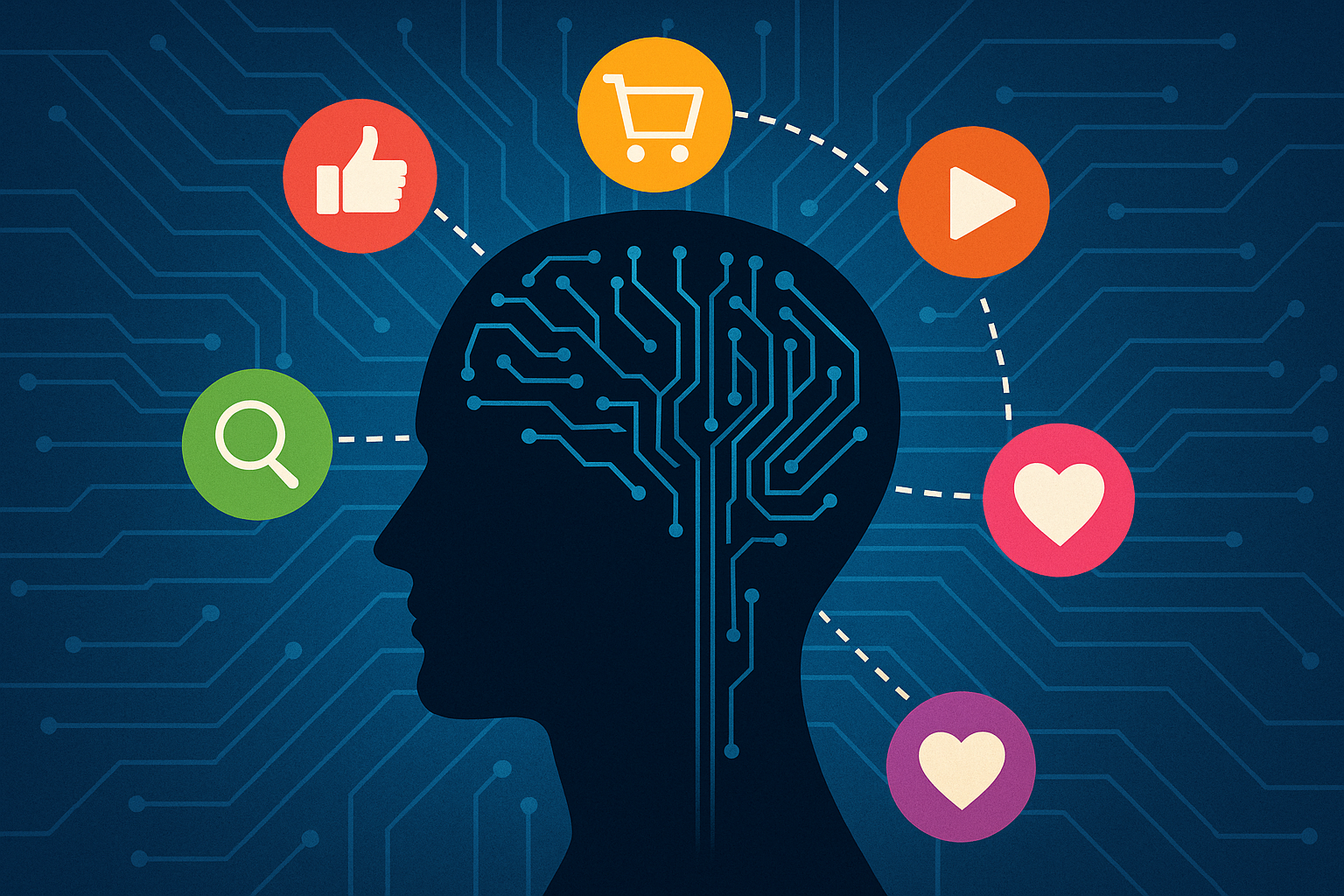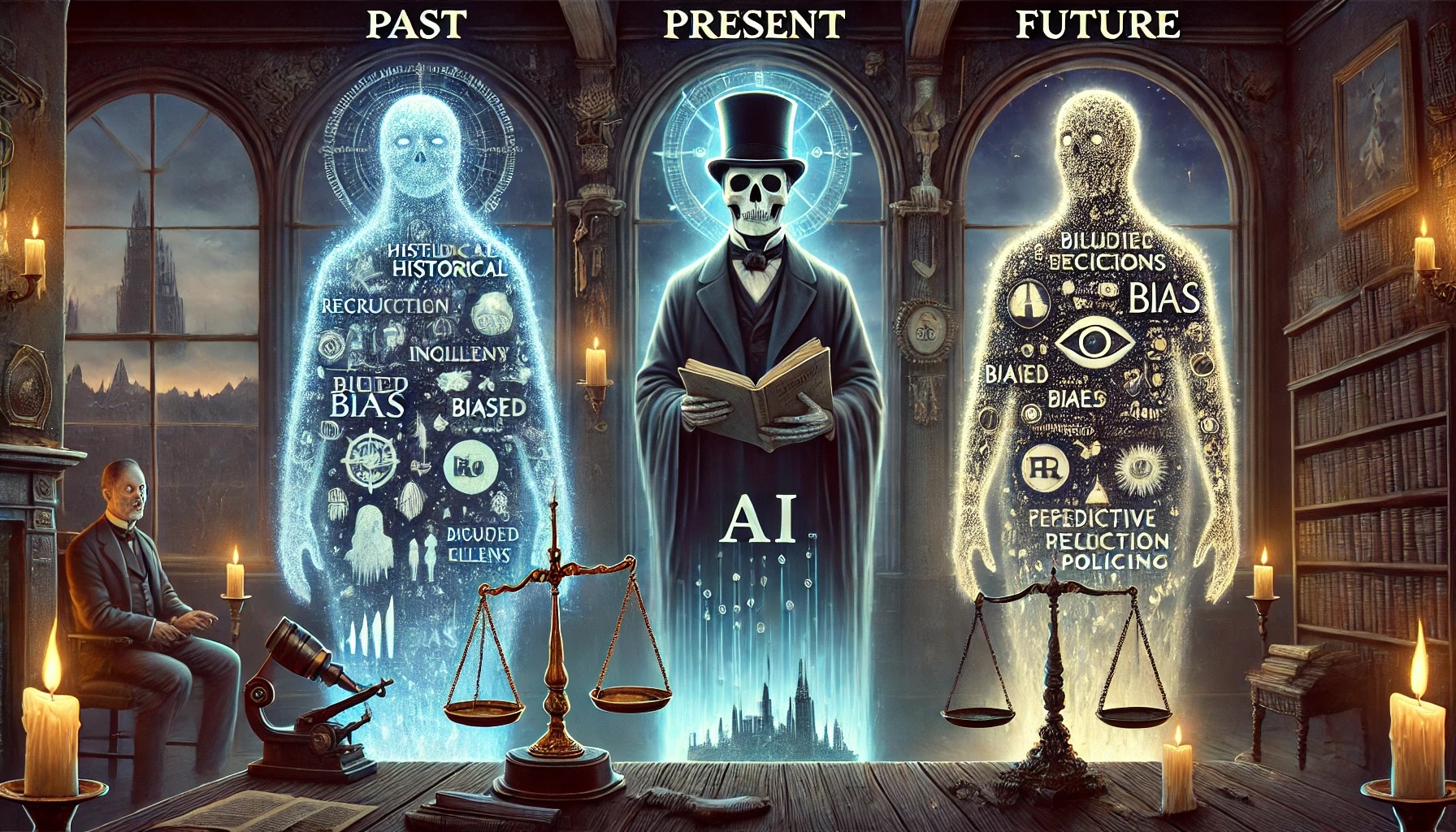We live in a digital world, where the lines between our physical and online identities blur more each day. People increasingly represent themselves and communicate through digital mediums, from social media profiles to virtual meetings and collaborative platforms. However, these digital spaces are not without bias. In fact, bias is pervasive, often ingrained in the algorithms that curate our content and shape our interactions. This bias seeps into the workplace, subtly influencing decisions, perceptions, and opportunities. It shows up in ways that are not always obvious—through the information we are exposed to, the voices that are amplified or silenced, and the unconscious judgments we make.
“If you are not paying for the product or service, you are the product.”

The Influence of Advertising and Algorithms
In the contemporary landscape of digital communication, the concept of media bias has expanded beyond traditional news reporting to encompass social media messaging, content creation, and other forms of digital media. Media bias refers to the various ways in which information can be presented to the audience with a slant or partiality that may not objectively reflect the reality of the situation. Allsides, a platform dedicated to presenting balanced news, has identified 16 specific types of media bias that are prevalent in the media today. These biases are not only inherent in news outlets but also deeply integrated into the digital ecosystems that define our online experiences.
At the core of this biased ecosystem is the business model of attention harvesting. This model underpins virtually all media, especially those that offer services for free. The adage, “If you are not paying for the product or service, you are the product,” encapsulates the essence of this approach. In a world where information is abundant and attention is scarce, media companies, content creators, and social platforms are all competing for the same limited resource: the eyeballs of their audience. This competition has profound implications for how media is created, distributed, and consumed, and it significantly influences the biases that are embedded within it.
The Evolution of Advertising Increases Bias
Consider how the bias towards media and entertainment has transformed the very homes we live in. By 2011, 96.7% of households owned television sets, with about 114 million American households having at least one TV by 2013. Modern homes were redesigned to feature TV rooms rather than traditional living rooms, as families gathered around the television, letting it dictate their schedules and arranging furniture to make it the focal point of the home. Television became both a window to the world and a mirror reflecting our social values, showing us the stories of both the people we abhor and aspire to be. While the trend now is for individuals to retreat to their own devices for personalized content, the pervasive presence of television historically provided advertisers a powerful tool to influence consumer behavior, embedding their messages into everyday life. The traditional advertising model, known as “Harvesting Attention,” still dominates digital media today, where television shows serve as fillers between ads. The primary revenue for TV networks came not from the shows themselves but from advertisers seeking to reach engaged audiences, thus biasing content creation towards what captivates viewers and satisfies advertisers.
“The goal is to keep viewers watching, to hold their attention long enough to deliver the advertisements that generate revenue.”
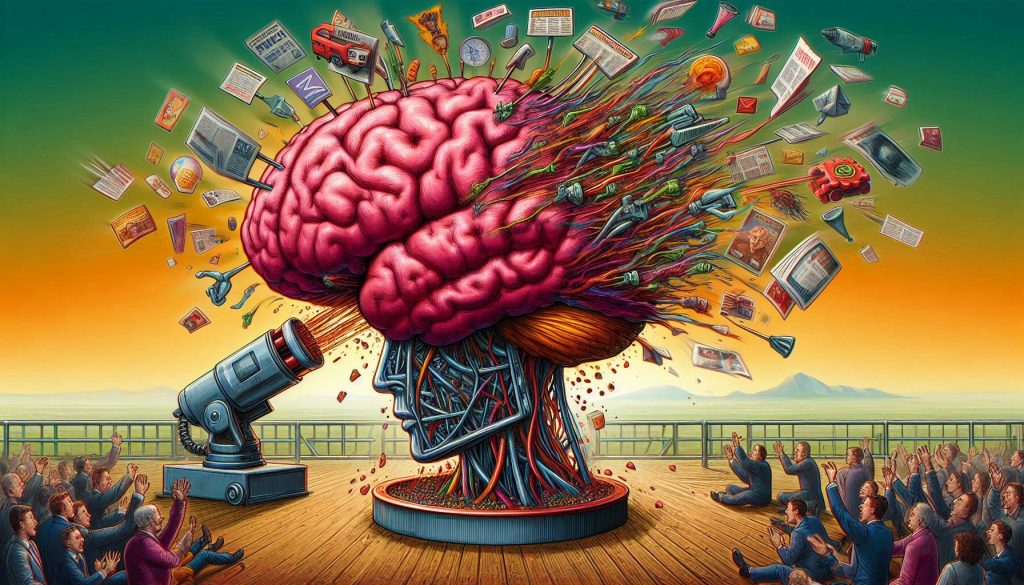
In this context, media bias is not just about the slant of a particular story or the political orientation of a news outlet; it is about the fundamental incentive structure that drives media production. The goal is to keep viewers watching, to hold their attention long enough to deliver the advertisements that generate revenue. The harvesting model provides a clear example of how media bias is shaped by economic incentives. This creates a bias towards sensationalism, controversy, and emotional engagement—what some consider to be a “race to the bottom” —anything that will hijack your amygdala to capture and hold your attention. The medium is exploiting our brain’s tendency to follow easy or incomplete ideas.
Algorithms Fuel Another Layer of Bias
With the advent of digital media, a new player has entered the arena: the algorithm. Unlike the traditional gatekeepers of media—editors, producers, and journalists—algorithms operate behind the scenes, silently shaping what content is seen and heard. Algorithms are designed to maximize engagement, and they do this by learning from users’ behaviors: what they click on, how long they view something, what they share, and what they ignore.
These algorithms are not neutral. They are programmed with specific goals in mind, primarily to increase user engagement to maximize ad revenue. In doing so, they amplify certain types of content over others, often prioritizing what is sensational, emotionally charged, or controversial, as these are more likely to engage users. This creates a feedback loop where the content that gets the most engagement is what is most often seen, reinforcing biases and potentially skewing public perception.
“The goal is to keep users scrolling, to hold their attention long enough to determine their psychological profile.”
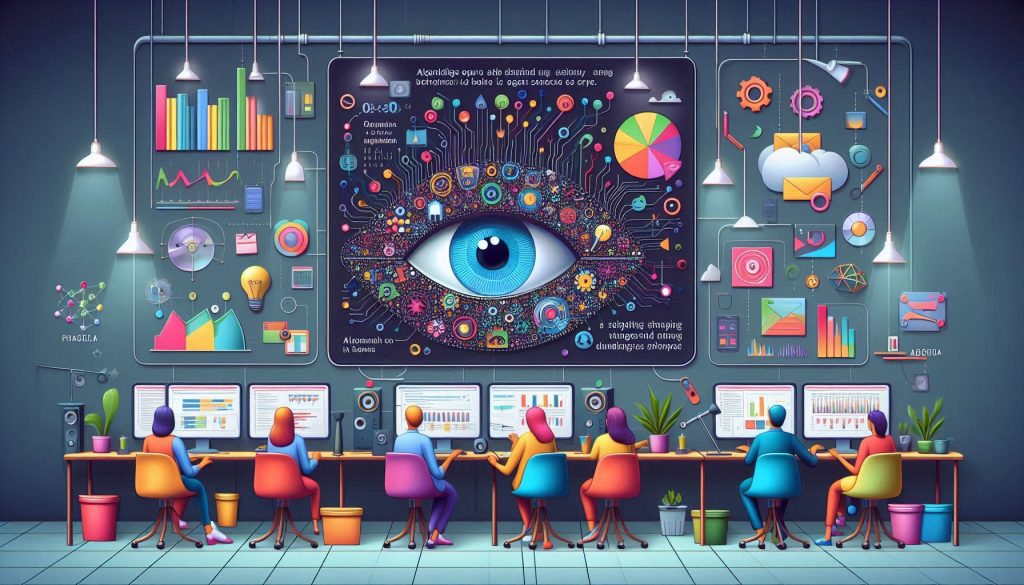
The initial intention behind algorithms might have been to simply deliver to users what they want. However, as these systems have evolved, they have learned to tap into deeper, more primal aspects of human psychology. Our brains are wired to respond to novelty, to seek out information that is surprising, interesting, or emotionally resonant. Algorithms exploit this by continually presenting us with content that triggers dopamine responses, keeping us engaged. The goal is to keep users scrolling, to hold their attention long enough to determine their psychological profile. This psychological need is exploited by the algorithm to dig deeper into personal preferences, proclivities, and even secret desires. The engineers, data scientists, and developers know our brains better than we do.
The Implications of Algorithm-Driven Media Bias
The shift from human editorial control to algorithmic curation has profound implications for media and public discourse. In a world where algorithms determine what content is seen, the power to shape public conversation no longer lies solely with journalists or media executives; it now resides with those who control the algorithms. This shift can result in a form of media bias that is subtler yet potentially more pervasive than traditional biases.
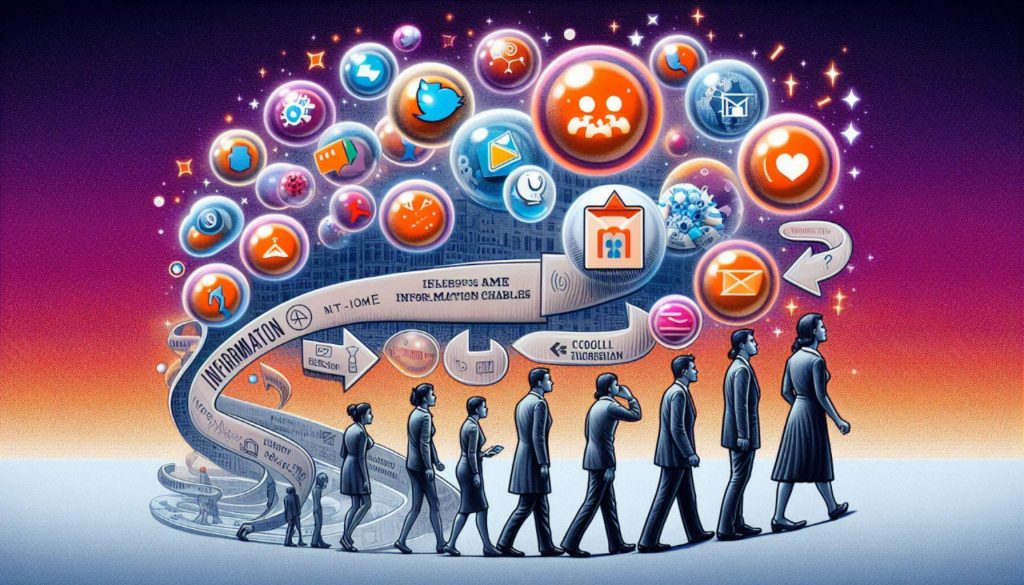
Information bubbles lead to echo chambers which lead to social polarization.
Firstly, reliance on algorithms often leads to the creation of information bubbles. In these bubbles, individuals are exposed only to news, opinions, and information that align with their preexisting beliefs, often due to personalized algorithms, social media networks, or selective exposure. This limited exposure reinforces existing viewpoints and makes it harder for people to encounter differing opinions or new ideas.
Secondly, these information bubbles can evolve into echo chambers, which are more extreme and static. In echo chambers, individuals actively seek out and reinforce only opinions that match their own, engaging in discussions that amplify their beliefs while dismissing or attacking opposing views. Actions within echo chambers, such as blocking or muting dissenting voices, frequent sharing of similar viewpoints, and intense agreement with like-minded individuals, create a self-reinforcing cycle. Lines get crossed when the arguments immediately become personal attacks resulting in a more closed-off and extreme mindset than the relatively permeable nature of information bubbles.
Lastly, the Echo Chambers drive groups of people to polarization and the algorithms reinforce the polarized barriers by favoring of misinformation. Sensational, shocking, or emotionally charged content is more likely to be shared, regardless of its accuracy. As these narratives gain traction within echo chambers, they are often accepted as absolute truth. Algorithms, aiming to maximize engagement, may prioritize such misinformation over factual, balanced reporting. This constant, daily inundation has wreaked havoc on our individual attention spans, interpersonal relationships, and collective discourse. Polarization fueled by advertising and algorithms has serious consequences for public understanding of critical issues, ranging from politics to public health.
How to Slay the Media Beast
Media bias is an inherent part of our digital mediated environment and lifestyle. The commercial aspects are driven by economic incentives. The social media algorithms curate and deliver content designed to keep you scrolling. While these biases can never be entirely eliminated, understanding their origins and mechanisms is the first step towards mitigating their impact.

The evidence of harm, intended or unintended, is already clear in the form of increased anxiety, stress, and a wide range of mental illnesses. The best practices for personal consumption are as follows:
- Start by limiting your consumption. Daily dose may not be necessary to stay “informed”
- Don’t just leave media running in the background as a source of comfort. And if you do, be mindful of what you put on as it has an impact on your mindset and well-being.
- Recognize that your digital diet for your mind is the equivalent nutritional diet for your body. You are what you consume. The digital content you consume influences and shapes who you are.
- Diversify your media sources and seek quality over quantity. Audit and reflect on your usage.
- Establish clear boundaries that define your relationship to the media, limit daily exposure and promote healthy habits.
To disrupt biases within organizations, businesses must demand greater transparency, encourage diverse perspectives, and promote media literacy. Companies should be open about their data practices, decision-making processes, and potential biases to build trust among employees and stakeholders. Encouraging diversity in thought and experience within teams can help prevent groupthink and create a more inclusive environment. Promoting media literacy in the workplace is crucial for employees to critically evaluate information, understand the influence of algorithms, and recognize biases in both internal communications and external media. These steps can help businesses navigate the complexities of the digital environment, make better-informed decisions, and foster a more inclusive and balanced workplace culture, which is essential for organizational success and ethical leadership.
Take on of our Assessments below to learn more about our consultative approach:

Percipio Company is led by Matthew Cahill. His deep expertise in cognitive, social, and workplace biases is rooted in the belief that if you have a brain, you have bias®. He works with executives to reduce mental mistakes, strengthen workplace relationships & disrupt existing bias within current HR processes, meeting protocols and corporate policies. Matthew has demonstrated success with large clients like LinkedIn, Salesforce and dozens of small to mid-size companies looking to create more inclusive workplaces, work smarter, generate more revenue and move from bias to belonging®.

